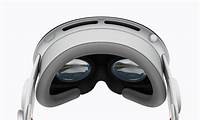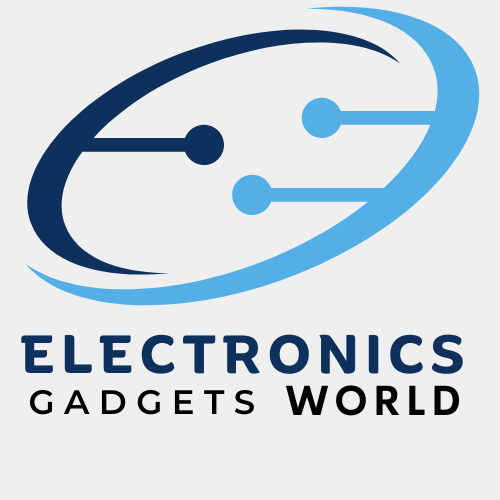Introduction
What is a gadget? What is a gadget? In today’s world, gadgets play a significant role in shaping our daily lives. But what exactly is a gadget? A gadget is a small technological device or tool designed to make life easier and more efficient. From smartphones to smartwatches, gadgets have become essential to modern living.
History of Gadgets
Gadgets have existed for centuries, evolving from simple tools to complex digital devices. The first gadgets were mechanical tools like the abacus, later followed by electronic innovations such as the telephone and radio. Over time, advancements in technology have led to the development of smart gadgets, which make tasks more efficient and convenient.
Types of Gadgets
Electronic Gadgets: Enhancing Modern Life
Electronic gadgets have become an essential part of our daily lives, offering convenience, efficiency, and entertainment. From smartphones to smart home devices, technology is constantly evolving to improve how we communicate, work, and relax.
These are digital devices powered by electricity, such as smartphones, laptops, and televisions.
Smartphones and Tablets: A Comparative Overview
Smartphones and tablets have become essential devices in modern life, offering convenience, connectivity, and powerful computing capabilities. While both serve similar purposes, they differ in various ways, making each more suitable for specific needs.
1. Size and Portability
Smartphones are smaller and can easily fit into a pocket or handbag, making them highly portable.
Tablets have larger screens, typically ranging from 7 to 12 inches, making them less portable but more suitable for media consumption and productivity tasks.
2. Performance and Usability
Smartphones are designed for quick tasks like calling, texting, social media browsing, and light gaming. High-end models come with powerful processors, making them capable of handling demanding applications.
Tablets offer a larger display and often have better battery life, making them ideal for tasks such as reading, video editing, graphic design, and online learning.
3. Operating Systems
Both devices commonly use the Android and iOS platforms. While smartphones are primarily designed for mobile communication and compact usability, tablets often provide a more immersive experience with optimized apps for their larger screens.
4. Connectivity and Features
Smartphones come with built-in cellular connectivity, GPS, and high-quality cameras, making them perfect for on-the-go communication and photography.
Tablets may or may not have cellular connectivity. They are often preferred for tasks like watching movies, working on documents, and video conferencing due to their larger screen size.
5. Battery Life
Tablets generally have a longer battery life compared to smartphones, as their larger size allows for bigger batteries. However, battery performance depends on usage patterns and device specifications.
6. Price and Affordability
Smartphones come in a wide price range, from budget-friendly models to premium flagship devices. Tablets, on the other hand, tend to be more affordable than high-end smartphones but can still be costly if they include advanced features.
Laptops and Computers: A Detailed Comparison
Laptops and desktop computers are essential devices used for work, entertainment, and personal tasks. While both serve similar purposes, they differ in terms of portability, performance, and usability. Understanding these differences can help users choose the best device for their needs.
1. Portability and Convenience
Laptops are designed for mobility, featuring a compact design with a built-in screen, keyboard, and battery. They are ideal for people who travel or work remotely.
Desktop computers are stationary and require a dedicated workspace. They consist of separate components, such as a monitor, keyboard, and CPU, making them less portable but often more powerful.
2. Performance and Power
Laptops are available in a range of performance levels, from basic models for web browsing to high-end gaming and professional workstations. However, due to size constraints, they may not be as powerful as desktops.
Desktops generally offer better performance because they can house larger processors, more RAM, and advanced cooling systems. This makes them ideal for gaming, video editing, and other intensive tasks.
3. Hardware and Upgradability
Laptops have limited upgrade options. Users can often upgrade RAM and storage, but other components, like the processor and graphics card, are typically fixed.
Desktops are highly customizable and upgradeable. Users can replace or upgrade almost any component, including the CPU, GPU, RAM, and storage, extending the device’s lifespan.
4. Display and Input Options
Laptops come with built-in screens ranging from 11 to 17 inches. While convenient, they may not provide the best viewing experience for professional work or gaming.
Desktops support multiple monitors, allowing for a more immersive experience, especially for gaming, designing, and multitasking.
5. Battery Life and Power Consumption
Laptops run on rechargeable batteries, making them suitable for use on the go. Battery life varies depending on usage and model.
Desktops require a constant power source, making them impractical for mobile use but more reliable for long hours of operation.
6. Cost and Affordability
Laptops tend to be more expensive for the same level of performance due to their compact design and built-in features.
Desktops offer better performance at a lower price. However, additional costs for peripherals like monitors and keyboards should be considered.
Smart Gadgets: Enhancing Modern Life
Smart gadgets have transformed the way we live, work, and communicate. These devices use advanced technology, such as artificial intelligence (AI) and the Internet of Things (IoT), to provide convenience, automation, and improved efficiency. From smart home devices to wearable tech, these innovations continue to shape the future.

1. Smart Home Devices: What is a gadget?
Smart home technology helps automate household tasks, improving security, comfort, and energy efficiency.
Smart Speakers (e.g., Amazon Echo, Google Nest)
Voice-controlled assistants that can play music, answer questions, and control other smart devices.
Smart Lights (e.g., Philips Hue, LIFX)
Wi-Fi-enabled lighting systems that allow remote control, color adjustment, and scheduling.
Smart Thermostats (e.g., Nest, Ecobee)
AI-powered thermostats that optimize heating and cooling to save energy and enhance comfort.
Smart Security Systems (e.g., Ring, Arlo, Blink)
Security cameras, smart locks, and doorbells provide remote surveillance and real-time alerts.
2. Wearable Technology
Wearable gadgets help track health, fitness, and personal productivity.
Smartwatches (e.g., Apple Watch, Samsung Galaxy Watch)
Track your heart rate, steps, and sleep, and receive notifications. Some models even support calls and mobile payments.
Fitness Trackers (e.g., Fitbit, Garmin)
Monitor physical activity, exercise, and calorie intake to promote a healthy lifestyle.
Smart Glasses (e.g., Meta Ray-Ban, Vuzix Blade)
Augmented reality (AR) glasses that display information, record videos, and assist with navigation.
3. Smart Kitchen Gadgets
Technology has made cooking and kitchen management more convenient.
Smart Refrigerators (e.g., Samsung Family Hub, LG InstaView)
Features touchscreen displays, inventory tracking, and recipe suggestions.
Smart Coffee Makers (e.g., Nespresso Vertuo, Keurig K-Supreme)
Brew coffee with customizable settings and remote control via smartphone apps.
Smart Ovens & Air Fryers (e.g., Breville Smart Oven, Ninja Foodi)
Use AI to adjust cooking times and temperatures for perfect meals.
4. Smart Entertainment & Personal Devices
Entertainment gadgets offer personalized and immersive experiences.
Streaming Devices (e.g., Amazon Fire Stick, Apple TV, Roku)
Provide access to online streaming services like Netflix, YouTube, and Disney+.
Smart Headphones & Earbuds (e.g., Sony WH-1000XM5, Apple AirPods Pro)
It offers noise cancellation, voice assistant integration, and superior audio quality.
Virtual Reality (VR) Headsets (e.g., Meta Quest, PlayStation VR)
Provide immersive gaming and interactive experiences in a virtual world.
5. Smart Health & Wellness Gadgets
Healthcare technology is improving personal health management.
Smart Blood Pressure Monitors (e.g., Omron, Withings BPM)
Provide real-time blood pressure tracking and mobile app integration.
Smart Sleep Trackers (e.g., Oura Ring, Sleep Number 360 Bed)
Monitor sleep patterns and suggest ways to improve rest quality.
Smart Air Purifiers (e.g., Dyson, Blueair)
Use sensors and AI to detect and remove allergens, dust, and pollutants from indoor air.
How Gadgets Improve Our Lives
Gadgets contribute to various aspects of life, including:
Enhancing communication through smartphones and messaging apps.
Boosting productivity with smart assistants and work tools.
Improving entertainment via gaming consoles and streaming services.
Increasing convenience with home automation devices.
Popular Gadgets in 2025
As of February 2025, the technology landscape is brimming with innovative gadgets that have significantly enhanced daily life. Here are some of the most popular devices making waves this year:
Apple Vision Pro
A groundbreaking mixed reality headset that seamlessly blends augmented and virtual reality, offering ultra-high-definition displays and spatial audio for immersive experiences.

Credit by: www.protechguides.com
Oculus Quest 3
The latest in standalone VR gaming, featuring enhanced performance, superior graphics, and a vast library of games, all without the need for a PC or console.

Credit by: www.protechguides.com
Tesla Cybertruck
An all-electric pickup truck boasting a unique angular design, impressive electric range, and advanced autopilot features, merging utility with sustainability.

Credit by: www.protechguides.com
Dyson Zone Air-Purifying Headphones
Innovative headphones that combine high-fidelity audio with air purification, filtering out up to 99% of urban pollutants for city dwellers.

Credit by: www.protechguides.com
Ray-Ban Meta Smart Glasses
Stylish eyewear that integrates seamlessly with augmented reality apps, allowing users to take calls, listen to music, and access digital information hands-free.

Credit by: www.protechguides.com
These gadgets exemplify the rapid advancements in technology, offering enhanced functionality, convenience, and entertainment in our daily lives.
Some of the most trending gadgets this year include:
Smartphones with AI-powered features.
Smartwatches that track health metrics.
VR Headsets for immersive experiences.
AI-powered assistants for voice-controlled automation.
The Role of Gadgets in Different Fields
Gadgets have become an integral part of various industries, enhancing productivity, efficiency, and convenience. Whether in healthcare, education, business, or entertainment, technology continues to shape and improve different sectors. Below is an overview of how gadgets contribute to various fields.
1. Healthcare
Smart gadgets have revolutionized healthcare, improving diagnosis, treatment, and patient care.
Wearable Health Devices (e.g., Fitbit, Apple Watch, Oura Ring) – Track heart rate, blood oxygen levels, sleep patterns, and physical activity.
Telemedicine Gadgets (e.g., Remote Patient Monitors, Smart Thermometers) – Enable virtual consultations and remote health monitoring.
Robotic Surgery Devices (e.g., Da Vinci Surgical System) – Assist doctors in performing precise and minimally invasive surgeries.
Impact: Improved patient monitoring, early disease detection, and remote healthcare access.
2. Education
Technology has transformed learning by making education more interactive and accessible.
Tablets and E-Readers (e.g., iPad, Kindle, Microsoft Surface) – Provide digital textbooks and interactive learning materials.
Smart Whiteboards (e.g., Microsoft Surface Hub, Promethean ActivPanel) – Enhance classroom engagement through interactive lessons.
VR and AR in Education (e.g., Meta Quest, Google Expeditions) – Offer immersive learning experiences in subjects like science and history.
Impact: Personalized learning, remote education opportunities, and enhanced student engagement.
3. Business and Productivity
Gadgets play a crucial role in improving efficiency and collaboration in the workplace.
Laptops and Smart Workstations (e.g., MacBook Pro, Dell XPS, Lenovo ThinkPad) – Enhance mobility and computing power for professionals.
Smart Assistants (e.g., Amazon Alexa for Business, Google Assistant) – Automate scheduling, reminders, and meeting coordination.
Video Conferencing Gadgets (e.g., Logitech Conference Cameras, Zoom Rooms, Microsoft Teams Devices) – Improve remote collaboration and virtual meetings.
Impact: Increased work efficiency, seamless communication, and better remote work management.
4. Entertainment and Gaming
Technology has revolutionized entertainment, making it more immersive and accessible.
Smart TVs and Streaming Devices (e.g., Apple TV, Roku, Amazon Fire Stick) – Provide high-quality content streaming.
Gaming Consoles (e.g., PlayStation 5, Xbox Series X, Nintendo Switch) – Deliver powerful graphics and realistic gameplay.
Virtual Reality (VR) and Augmented Reality (AR) (e.g., Meta Quest, HTC Vive, Apple Vision Pro) – Create immersive gaming and interactive experiences.
Impact: More engaging entertainment, enhanced gaming experiences, and access to a wide range of digital content.
5. Transportation and Automotive
Gadgets are making transportation safer, smarter, and more efficient.
Autonomous Vehicles (e.g., Tesla Autopilot, Waymo Self-Driving Cars) – Use AI and sensors for self-driving capabilities.
Smart GPS and Navigation (e.g., Google Maps, Waze, Garmin GPS) – Offer real-time traffic updates and navigation assistance.
Electric Vehicle (EV) Gadgets (e.g., Tesla Superchargers, EV Smart Chargers) – Improve charging efficiency and range management.
Impact: Enhanced road safety, reduced carbon emissions, and improved travel efficiency.
6. Smart Homes and Security
Home automation gadgets provide security, convenience, and energy efficiency.
Smart Locks and Security Cameras (e.g., Ring, Arlo, Nest Cam) – Offer remote surveillance and access control.
Smart Thermostats and Lighting (e.g., Nest, Ecobee, Philips Hue) – Automate energy savings and lighting control.
Voice Assistants (e.g., Amazon Echo, Google Nest Hub) – Control smart home devices with voice commands.
Impact: Safer homes, energy savings, and improved home automation.
Electronic Gadgets: Enhancing Modern Life
Electronic gadgets have become an essential part of our daily lives, offering convenience, efficiency, and entertainment. From smartphones to smart home devices, technology is constantly evolving to improve how we communicate, work, and relax.
Types of Electronic Gadgets
Smartphones and Tablets
Enable communication, internet browsing, and entertainment.
Popular brands include Apple, Samsung, and Google.
Laptops and Computers
Essential for work, education, and gaming.
Advances in processors and AI integration improve performance.
Wearable Technology
Smartwatches and fitness trackers monitor health and productivity.
Brands like Fitbit, Garmin, and Apple Watch dominate the market.
Smart Home Devices
Smart speakers (Amazon Echo, Google Nest) assist with daily tasks.
Security cameras and smart thermostats increase home safety and efficiency.
Entertainment Gadgets
Gaming consoles (PlayStation, Xbox, Nintendo Switch).
Streaming devices (Roku, Fire TV, Apple TV).

Portable Audio & Accessories
Wireless earbuds (AirPods, Bose, Sony).
Noise-canceling headphones for immersive sound experiences.
Benefits of Electronic Gadgets
Convenience – Automation and smart technology simplify tasks.
Connectivity – Instant communication worldwide.
Entertainment – Access to music, movies, and games on the go.
Productivity – Enhances efficiency in work and education.
Challenges & Considerations
Battery Life – Regular charging is required.
Cost – High-end gadgets can be expensive.
Privacy & Security – Risk of cyber threats and data breaches.
How to Choose the Right Gadget: A Step-by-Step Guide
With so many gadgets available today, it can be overwhelming to decide which one is right for you. To make an informed decision, it’s important to consider several factors based on your needs, preferences, and budget. Here’s a guide to help you choose the perfect gadget:
1. Identify Your Needs
Purpose: Determine what you primarily need the gadget for. For example, a tablet might be great for reading and browsing, while a laptop is better suited for work or gaming.
Features: List the specific features that are most important to you. Do you need a high-quality camera? Long battery life? A lot of storage space? Prioritize your must-have features.
2. Research Different Brands and Models
Compare Specifications: Look at the technical specifications of different models in the same category. For smartphones, this could include processing speed, camera quality, and screen resolution. For laptops, consider processor type, RAM, and storage.
Brand Reputation: Some brands have a reputation for reliability, customer support, and innovation. Research reviews and ratings to see how products from different brands perform.
3. Set a Budget
Price Range: Decide on a budget that you are comfortable with. High-end gadgets often come with advanced features, but there are also great mid-range options that offer excellent value for money.
Additional Costs: Consider accessories, apps, and any necessary subscriptions (e.g., cloud storage, streaming services) when budgeting.
4. Check for Compatibility
Operating System: If you’re already using a particular ecosystem (like Apple, Android, or Windows), it’s often easiest to stick to compatible gadgets. This helps ensure smooth integration with your existing devices and apps.
Software and App Compatibility: Ensure that the gadget you’re considering supports the software or apps you rely on.
5. Consider Battery Life
Usage Duration: If you’re on the go frequently, a gadget with long battery life is crucial. Look for battery performance reviews or specifications to find out how long the gadget lasts under normal use.
Charging Time: Some gadgets offer fast charging, which can be very convenient if you’re pressed for time.
6. Look at Design and Build Quality
Portability: Think about how often you’ll be carrying the gadget. A lightweight, compact design might be ideal if portability is important.
Durability: Check for build quality, especially if you’re likely to use the gadget outdoors or in rugged environments. Consider a gadget with a strong frame, water resistance, or shockproof features.
7. User Experience and Reviews
Hands-On Experience: Whenever possible, try out the gadget in person before purchasing. This gives you a feel for the design, interface, and usability.
Customer Reviews: Read online reviews from users who have already bought the gadget. This provides real-world insights into its performance, ease of use, and any potential issues.
8. After-Sales Service and Warranty
Warranty: Check the warranty details for the gadget. Some gadgets come with longer warranty periods, while others might require an extended warranty purchase.
Customer Support: Consider the customer service reputation of the manufacturer. Good support can make a huge difference if your gadget needs repairs or troubleshooting.
9. Consider the Ecosystem
Integration with Other Devices: If you already own devices that work well together (like an Apple iPhone, MacBook, and Apple Watch), you might want to choose a gadget that fits into that ecosystem.
Smart Features: Look for gadgets that work with smart home systems, voice assistants (like Alexa or Google Assistant), or other devices you use daily.
10. Try to Future-Proof
Upcoming Updates: Make sure the gadget you choose will receive updates for a reasonable period, especially if you’re investing in something long-term, like a smartphone or laptop.
Scalability: Look for gadgets that can grow with your needs. For example, a laptop with a good amount of storage space or the ability to upgrade components like RAM or SSD.
Pros and Cons of Gadgets
Electronic gadgets have revolutionized the way we live, offering numerous advantages, but they also come with a set of drawbacks. Below is an overview of the pros and cons of gadgets to help you make a more informed decision about incorporating them into your life.
Pros of Gadgets
Convenience
Gadgets make everyday tasks easier and faster. For example, smartphones let you manage calls, emails, navigation, and entertainment all in one device, saving you time and effort.
Increased Productivity
Gadgets like laptops, tablets, and smartwatches help people stay organized and productive, whether it’s for work, study, or personal tasks. With the right apps and tools, you can schedule tasks, communicate quickly, and access information on the go.
Entertainment
Gadgets like gaming consoles, smart TVs, and streaming devices provide access to a vast library of entertainment options, including movies, music, games, and social media platforms, making them a great source of relaxation.
Connectivity
Gadgets such as smartphones, smartwatches, and laptops help you stay connected with family, friends, and colleagues regardless of geographical location. Instant messaging, video calls, and social media keep relationships intact.
Learning & Education
With e-readers, tablets, and educational apps, gadgets enable self-learning and online education. They provide access to a world of information, courses, and tutorials, making learning more interactive and accessible.
Health & Fitness
Wearable devices like fitness trackers and smartwatches help users monitor their health and physical activities. These gadgets track steps, calories, heart rate, and sleep patterns, promoting healthier lifestyles.

Innovation & Creativity
Gadgets like digital cameras, graphics tablets, and music production tools enable users to express creativity in art, design, photography, music, and video production.
Cons of Gadgets
Over-Dependency
People can become overly reliant on gadgets for daily tasks, losing the ability to perform basic tasks without technology. This dependency can lead to problems if the gadgets malfunction or break.
Privacy and Security Risks
Many gadgets collect personal data, such as location, search history, and habits. This raises concerns about privacy and security, as data breaches, hacking, and unauthorized access can lead to identity theft or loss of sensitive information.
Distraction
Gadgets, particularly smartphones and gaming devices, can be distracting, affecting focus at work, school, or even during personal interactions. The constant influx of notifications and social media updates can reduce attention spans and productivity.
Health Issues
Prolonged use of gadgets has been linked to issues like eye strain (from screen time), sleep disruption (due to blue light exposure), and physical strain (from repetitive motions like typing or texting). Overuse can also lead to mental health concerns, such as anxiety or addiction to social media.
Environmental Impact
Electronic waste is a growing problem, as gadgets have a limited lifespan and contribute to pollution when discarded improperly. The manufacturing and disposal of gadgets can lead to environmental harm, especially when they contain non-recyclable materials.
Cost
The latest gadgets can be expensive, especially high-end models from popular brands. Additionally, there are often extra costs for accessories, subscriptions, and software updates, which can add up over time.
Social Isolation
While gadgets connect us virtually, excessive use can reduce face-to-face interactions and lead to social isolation. People may become more focused on digital interactions than on in-person relationships.
Obsolescence
Gadgets quickly become outdated due to rapid technological advancements. A device that is state-of-the-art today may be obsolete in just a few years, forcing users to upgrade regularly to keep up with new features and improvements.
Future of Gadgets: What to Expect in the Coming Years
Technology is evolving at a rapid pace, and gadgets are becoming smarter, more efficient, and deeply integrated into our daily lives. The future of gadgets will bring innovations that enhance convenience, productivity, entertainment, and even our health. Here are some key trends and developments to expect in the coming years.
1. Artificial Intelligence (AI) Integration
AI will play a bigger role in gadgets, making them more intuitive and capable of understanding user behavior.
Smart assistants like Alexa, Siri, and Google Assistant will become even more advanced, providing personalized recommendations and automating daily tasks.
AI-powered wearables will track health metrics more accurately, detecting early signs of illness and offering real-time advice.
2. Internet of Things (IoT) Expansion
More gadgets will be connected to the Internet of Things (IoT), allowing seamless communication between devices.
Smart homes will have AI-controlled lighting, security systems, and appliances that can be controlled remotely.
IoT-enabled cars will have enhanced safety features, automatic maintenance checks, and self-driving capabilities.
3. Foldable and Flexible Gadgets
Smartphones, tablets, and laptops will feature flexible and foldable screens, making them more portable and durable.
Wearable gadgets like smartwatches and fitness bands will have flexible displays, enhancing comfort and usability.
4. Augmented Reality (AR) and Virtual Reality (VR)
AR and VR gadgets will revolutionize gaming, education, and work environments.
Smart glasses with AR capabilities will provide real-time information overlays, making daily tasks more interactive.
VR headsets will be used for virtual meetings, immersive learning, and remote work collaboration.
5. Sustainable and Eco-Friendly Gadgets
Companies will focus on creating gadgets with recyclable materials and energy-efficient components.
Solar-powered and biodegradable gadgets will reduce electronic waste and environmental impact.
More brands will adopt repairable and upgradeable designs to extend the lifespan of gadgets.
6. 6G and Faster Connectivity
The introduction of 6G technology will provide ultra-fast internet speeds, making data transfer almost instantaneous.
Cloud computing will improve, allowing gadgets to rely less on internal storage and more on cloud-based applications.
Smart cities will benefit from better connectivity, improved traffic management, healthcare, and security systems.
7. Advanced Wearable Technology
Future wearables will go beyond fitness tracking, offering real-time health monitoring for blood pressure, glucose levels, and even stress levels.
Smart clothing embedded with sensors will track posture, hydration levels, and physical activity.
Brain-computer interfaces (BCIs) may allow people to control gadgets with their thoughts.
8. Quantum Computing and Enhanced Processing Power
Gadgets will have more powerful processors, capable of handling complex tasks at lightning speeds.
Quantum computing could revolutionize data encryption, making gadgets more secure.
AI-powered processors will enable devices to function efficiently with minimal power consumption.
9. Robotics and Automation
Personal robots will assist with household chores, caregiving, and even personal security.
Automated delivery drones and self-driving cars will become more common.
AI-powered robotic assistants will be used in hospitals, helping doctors with surgery and patient care.
10. Personalized and Adaptive Gadgets
Gadgets will adapt to individual user preferences, learning from habits and behaviors to offer a customized experience.
Smart devices will anticipate user needs, such as adjusting screen brightness based on surroundings or recommending content based on preferences.
Biometric security (fingerprint, facial recognition, voice authentication) will enhance gadget security.
FAQs
1. What is the difference between a gadget and a device?
A gadget is typically a smaller, more innovative tool, while a device is a broader term for electronic equipment.
2. How do gadgets affect our daily lives?
They enhance convenience, improve productivity, and provide entertainment.
3. Are all gadgets electronic?
No, some gadgets are mechanical or manual tools, but most modern ones are electronic.
4. What are the risks of using gadgets excessively?
Overuse can lead to addiction, privacy concerns, and health issues like eye strain.
5. What is the future of gadgets?
The future lies in AI, automation, and eco-friendly technology, making life even more convenient.
Conclusion
Gadgets have become an essential part of modern life, enhancing convenience, communication, productivity, and entertainment. From smartphones and laptops to smart home devices and wearables, technology continues to evolve, making our daily tasks easier and more efficient.
However, while gadgets bring many benefits, they also come with challenges, such as over-dependency, security risks, and environmental concerns. It is important to use gadgets wisely, balancing technology with real-life interactions and ensuring responsible usage.
Looking ahead, the future of gadgets is promising, with advancements in AI, IoT, AR/VR, and sustainable technology set to revolutionize how we live and work. As we embrace innovations, the key is to choose and use gadgets in a way that enhances our lives without compromising privacy, health, or the environment.
Would you like more insights on a specific aspect of gadgets, such as recommendations or comparisons?





Leave a Reply